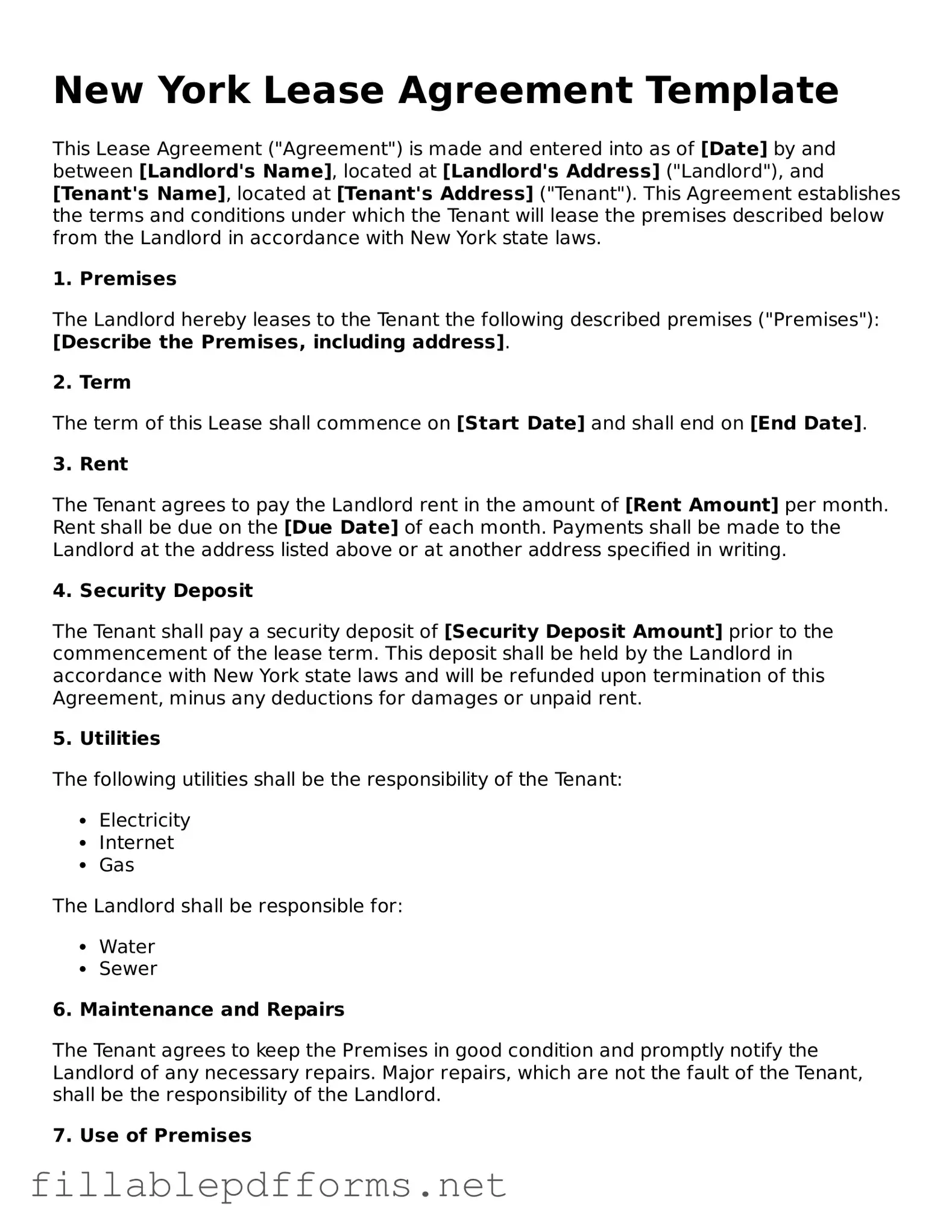Attorney-Verified Lease Agreement Form for New York State
A New York Lease Agreement form is a legal document that outlines the terms and conditions between a landlord and a tenant for renting a residential or commercial property. This form serves as a crucial tool for both parties, detailing responsibilities, rights, and obligations throughout the lease term. Understanding the key elements of this agreement can help ensure a smooth rental experience.
Launch Editor Here
